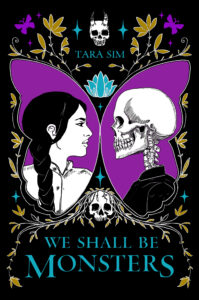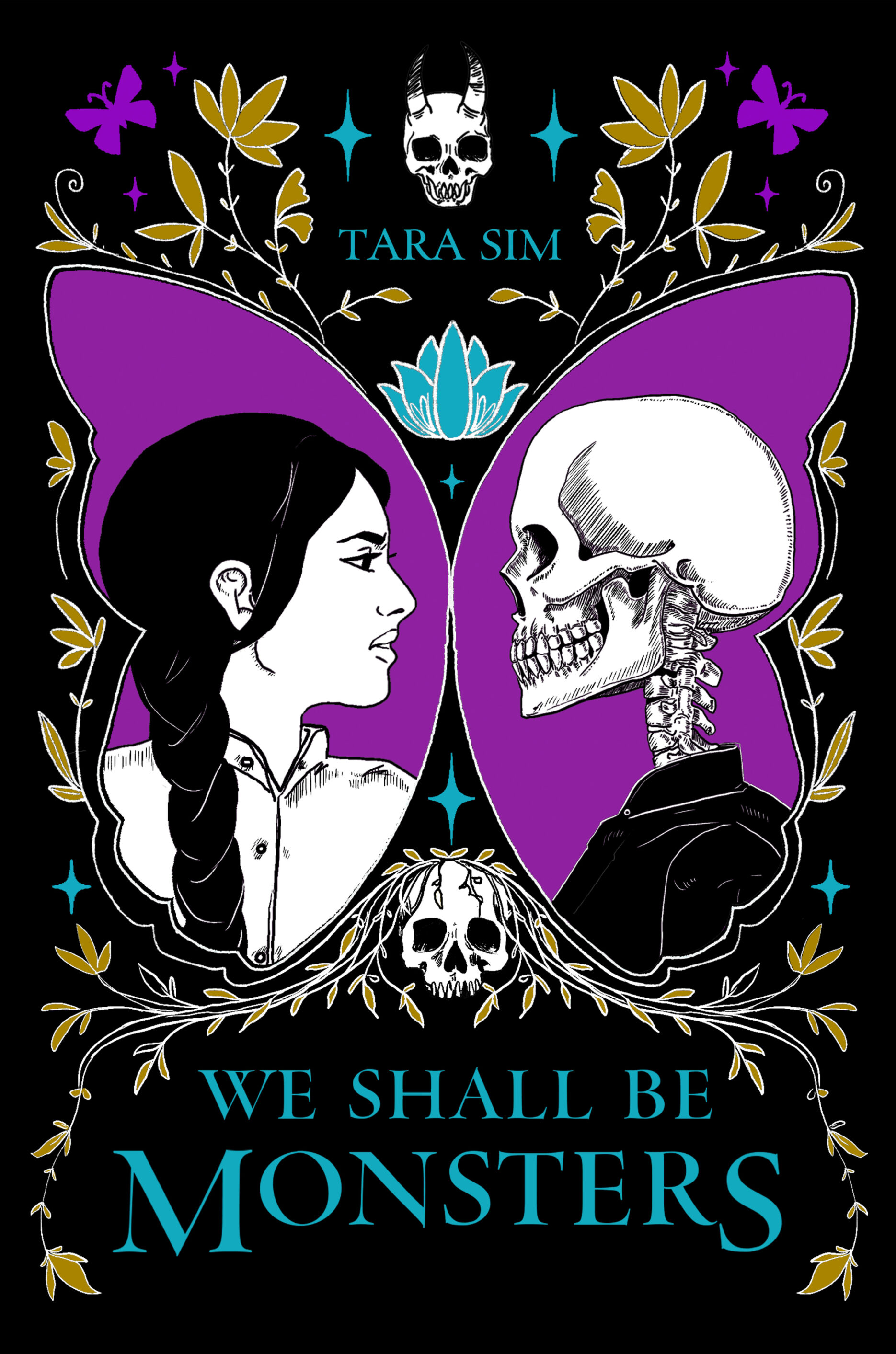 Hailed as a cross between Frankenstein and Indian mythology, We Shall Be Monsters, by Tara Sim, delivers on that promise – and more. Following the misadventures of Kajal – an outspoken girl who, from the point of view of many of the other characters, could be seen as an antagonist – the story itself is a wonderful mashup of creative fantasy, horror, and genuine heart.
Hailed as a cross between Frankenstein and Indian mythology, We Shall Be Monsters, by Tara Sim, delivers on that promise – and more. Following the misadventures of Kajal – an outspoken girl who, from the point of view of many of the other characters, could be seen as an antagonist – the story itself is a wonderful mashup of creative fantasy, horror, and genuine heart.
After the death of Kajal’s sister, Lasya, Kajal finds herself in a race against the clock and the limits of possibility to bring her back to life. But while Kajal’s resurrectionist capabilities come to her more easily than they ever did for Victor Frankenstein (we witness her first successful resurrection in the first 20 pages!), they also cause her trouble – namely, due to superstitious townspeople who view her as a witch and a nuisance. She narrowly escapes execution and is reluctantly drawn into political conflict in the process: The rebels who free her hope she can resurrect the former crown prince of the land, which would further their cause of overthrowing the current cruel regime. In return, the rebels promise they will also help Kajal return to Lasya and resurrect her. Kajal agrees to their plan, but as many plans do, it goes awry: The body she resurrects is not the crown prince but his previously unknown twin. Now, she’s under an even greater time crunch to find and resurrect her intended targets – and she faces some even more unexpected challenges along the way.
A particular highlight is the world in which this all takes place. Readers familiar with Indian mythology will admire the skillful way Sim has woven traditional stories and concepts into her world, but a prior understanding of them isn’t necessary to enjoy the ride. In fact, Sim includes a note at the end of the book sharing how she came to draw on her influences, and she explains the differences between the folklore and religious traditions that inspired her and her twists on them for Kajal’s story. For any readers who enjoy wondering about worldbuilding or love to see the connections between stories and the things that inspired them, We Shall Be Monsters offers an excellent opportunity to dive deep into a world of fascinating folklore research.
Kajal is also a breath of fresh air as a character. One of my frequent complaints about YA protagonists is how often they miss the mark in terms of relatability – or that in trying to relate to as many readers as possible, they fall flat. Kajal doesn’t. She may be weird and off-putting to many other people in the story, but it makes for a highly interesting character. She’s deeply flawed, brilliant, vulnerable, and prickly all at once. She doesn’t worry about being “likable,” nor does Sim fall into the trap of trying too hard to make her a rough-and-tumble, “not like other girls” character. Kajal is wonderfully human, and though she’s not a traditional hero, she’s a perfect protagonist for any reader who has ever felt like an outsider.
My one (trivial) disappointment is that I didn’t expect We Shall Be Monsters to be the first in a series – so it seems I’ll have to wait to find out what happens next. If you’re someone who doesn’t mind an uncertain length of time between books, however, the vibrant characters, fantastical world, and thought-provoking takes on monstrosity and humanity make We Shall Be Monsters well worth the read.
A copy of this book was provided by the publisher, Penguin Random House, for review.


